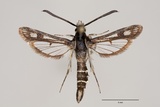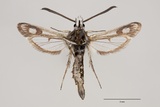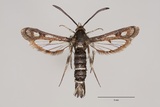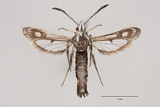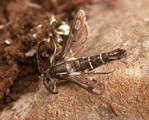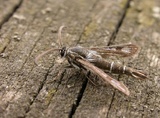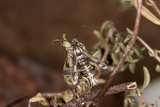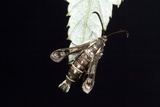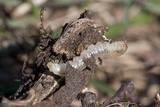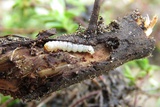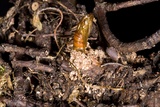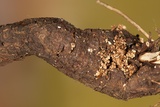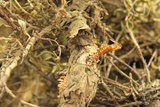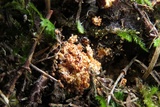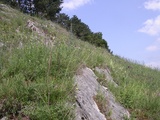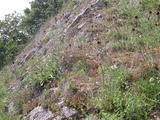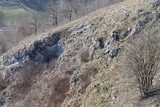Pyropteron affinis (Staudinger, 1856) Species
Last modified: Nov. 21, 2025, 7:21 p.m.
A local species in Belgium, known only from the 3 southernmost provinces. The first known specimen from our country was collected in 1952 in LX.
P. affinis reaches in Belgium the northern border of its distribution area.
Details
- Classification
- Family: Sesiidae > Subfamily: Sesiinae > Tribus: Synanthedonini > Genus: Pyropteron > Species: Pyropteron affinis
- Vernacular names
- Zonneroosjeswespvlinder (NL), Sésie de l'hélianthème (FR), Sonnenröschen-Glasflügler (DE)
- First mention in Belgium
- Garrevoet Theo 1995. Synansphecia affinis (Staudinger, 1856): nieuw voor de Belgische fauna (Lepidoptera: Sesiidae). — Phegea 23(3): 141–143. On page 141. view page
- Status
-
Native
Distribution
Imago
This is a small species having a dark silver-grey appearance on its upperside, except for (in general) 2 small white bands on the abdomen. The underside is much brighter with a light silvery ground colouration. The palps are very strikingly pure white.
P. affinis responds very well to the pheromone developed for S. myopaeformis and is attracted in the afternoon, typically from around 15h till 18h. But this is, as always, very dependent on the climatological circumstances of the moment.
Egg
The dark-brown eggs are elliptically shaped.
Mine
The caterpillar constructs a rather short gallery in the root of the hostplant.
Bionomics
The caterpillar lives in the rootstock of its the hostplant and produces a fair amount of frass which is yellow-brown and much paler than with most other Sesiidae. It overwinters as a small larva and, following spring, continues feeding on the sap in the root of the plant. Because P. affinis reaches the northern border of its distribution in our regions, the development takes most likely 2 years while in more southern –and thus warmer– countries it takes only one year.
After hibernation, the larva prepares an exit hole that is not visible from the outside or consists of a small dome of spun plant-particles. It than pupates without constructing a cocoon. In general, the imagines hatch in early morning.
Flight periods
The adults fly from May till the end of July but the main period lays in June.
Observed on
- Host plant (species):
- Helianthemum nummularium, Helianthemum apenninum and Fumana procumbens
- Host plant (genera):
- Helianthemum
The larva bores into the rootstock of mainly Helianthemum nummularium but there are also observations in H. apenninum. Also Fumana procumbens is a known hostplant. In literature also other Helianthemum species are mentioned.
